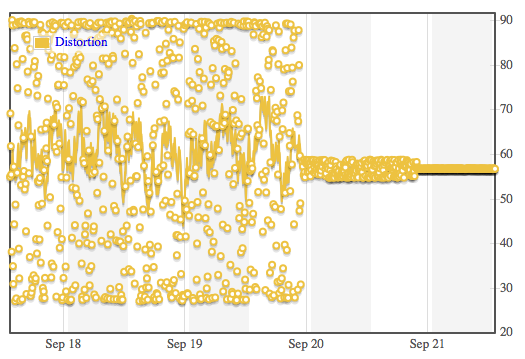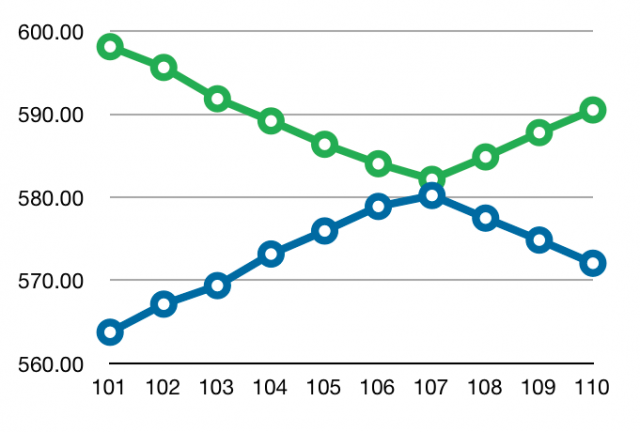One often averages many measurements in order to cancel out errors. A lot of the noise in my shop comes from 60Hz power-line hum so to make measurements I average over 1/60th of a second, one complete cycle of the interfering noise. With my recent SensorServer conversion I started applying this technique everywhere which lead to a surprising result on one particular channel:

This shows my power-line waveform monitoring channel: All noise by this definition. Notice that it drops to near zero (peak-to-peek) on Sept 20. That's when my sensor network conversion happened (time here is reported in GMT.) I noticed the change a day later, wondered why it didn't drop all the way to zero, and started investigating.
I had been taking samples, 100 at a time, with the Txtzyme code "100{4sp150u}". This says, sample and print channel 4, wait 150usec, repeat. The timing is approximate here, because the other instructions take microseconds too. I ball-parked these numbers when dealing with my first hum problem. Maybe I can do better.
I wrote a command line script to sweep through various repeat counts, thereby varying slightly the period over which I observed the hum. I figured one of these values would be close to the desired 1/60 second. I'd know I had found the ideal number when the peak-to-peak value was the smallest. Here's what I found:

This shows that collecting 107 samples more correctly averages over the desired interval. It also tells me how fast Txtzyme runs by measuring it against the ac power as a timebase. If 107 iterations equals 1/60 second, then one iteration equals 155.8 microseconds. That means my loop overhead is 5.8 microseconds. Not bad.
I changed the loop count in my acquisition logic the next day and this shows in the first graph as a peak-to-peak amplitude of darn near zero. Cool, eh?